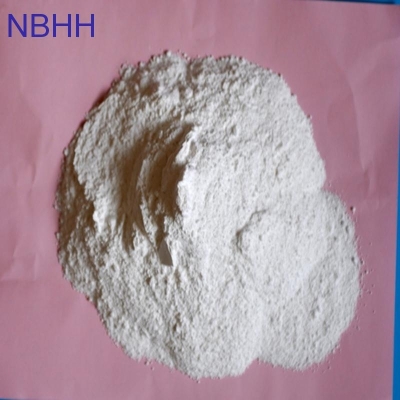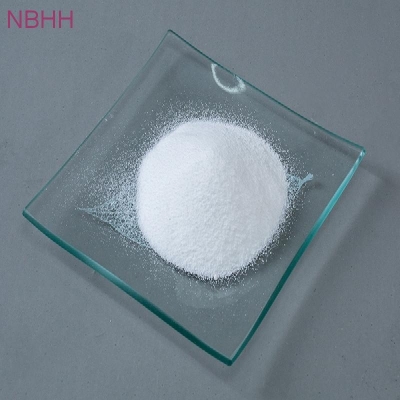-
Categories
-
Pharmaceutical Intermediates
-
Active Pharmaceutical Ingredients
-
Food Additives
- Industrial Coatings
- Agrochemicals
- Dyes and Pigments
- Surfactant
- Flavors and Fragrances
- Chemical Reagents
- Catalyst and Auxiliary
- Natural Products
- Inorganic Chemistry
-
Organic Chemistry
-
Biochemical Engineering
- Analytical Chemistry
-
Cosmetic Ingredient
- Water Treatment Chemical
-
Pharmaceutical Intermediates
Promotion
ECHEMI Mall
Wholesale
Weekly Price
Exhibition
News
-
Trade Service
Pomegranate is widely grown in Xinjiang as a nutrient-rich fruit, and the pomegranate peel, as a non-edible part, accounts for about half of the total fruit weight
.
In addition to direct consumption, the most important industrial processing method of pomegranate is juicing, which produces a large amount of pomegranate peel waste, which not only pollutes the environment, but also is a serious waste of resources
.
Studies have shown that pomegranate peel has various biological activities such as antioxidant, antibacterial, antitumor and anti-inflammatory
.
Polyphenolic compounds are important active ingredients in pomegranate peel, and are the first choice for developing pomegranate biological activity, with great potential application value .
.
In addition to direct consumption, the most important industrial processing method of pomegranate is juicing, which produces a large amount of pomegranate peel waste, which not only pollutes the environment, but also is a serious waste of resources
.
Studies have shown that pomegranate peel has various biological activities such as antioxidant, antibacterial, antitumor and anti-inflammatory
.
Polyphenolic compounds are important active ingredients in pomegranate peel, and are the first choice for developing pomegranate biological activity, with great potential application value .
Pomegranate peel polyphenols have the characteristics of strong polarity, poor solubility, and easy to be oxidized or decomposed.
Except for the main components such as punicalagin, the content of other polyphenols in pomegranate peel is relatively low, so the separation and purification of pomegranate peel polyphenols It's a very challenging job
.
In addition, there are a lot of quaternary carbons in the structure of pomegranate peel polyphenols, and their signals are less in two-dimensional nuclear magnetic resonance spectroscopy (2D-NMR), which brings great difficulties to the structure identification
.
Therefore, in recent years, the research on pomegranate peel is mostly based on the qualitative analysis of its chemical composition, and the research on the isolation and structural characterization of the monomer compounds is less
.
Except for the main components such as punicalagin, the content of other polyphenols in pomegranate peel is relatively low, so the separation and purification of pomegranate peel polyphenols It's a very challenging job
.
In addition, there are a lot of quaternary carbons in the structure of pomegranate peel polyphenols, and their signals are less in two-dimensional nuclear magnetic resonance spectroscopy (2D-NMR), which brings great difficulties to the structure identification
.
Therefore, in recent years, the research on pomegranate peel is mostly based on the qualitative analysis of its chemical composition, and the research on the isolation and structural characterization of the monomer compounds is less
.
Recently, the research group of Aji Akbar Isa, a researcher at the Xinjiang Institute
.
The team used a combination of column chromatography , cryogenic chromatography and high- phase liquid chromatography to separate and purify 10 polyphenolic compounds from pomegranate peel
.
The structures of these compounds were determined by high-resolution mass spectrometry, one-dimensional and two-dimensional nuclear magnetic resonance spectral data analysis, and 3 of them were new compounds containing a hexahydroxydiphenoyl (HHDP), a 2,3 ,4,5-tetra-substituted benzoic acid group and one 1,4,6-tri-substituted glucosyl group
.
.
The team used a combination of column chromatography , cryogenic chromatography and high- phase liquid chromatography to separate and purify 10 polyphenolic compounds from pomegranate peel
.
The structures of these compounds were determined by high-resolution mass spectrometry, one-dimensional and two-dimensional nuclear magnetic resonance spectral data analysis, and 3 of them were new compounds containing a hexahydroxydiphenoyl (HHDP), a 2,3 ,4,5-tetra-substituted benzoic acid group and one 1,4,6-tri-substituted glucosyl group
.
In order to gain a preliminary understanding of the biological activities of these polyphenolic compounds, the researchers conducted in vitro antibacterial, antioxidant and antitumor activity assays
.
The results show that 6 compounds have significant scavenging of 1,1-diphenyl-2-trinitrophenylhydrazyl [1,1-Diphenyl-2-picrylhydrazyl radical 2,2-Diphenyl-1-(2,4,6- trinitrophenyl)hydrazyl, DPPH]; 2 compounds have a certain degree of antibacterial activity against Candida albicans; 1 compound has a certain degree of antibacterial activity against Candida albicans and Escherichia coli; 4 compounds have antibacterial activity against human cervical cancer Hela cells Proliferation has a weak inhibitory effect
.
.
The results show that 6 compounds have significant scavenging of 1,1-diphenyl-2-trinitrophenylhydrazyl [1,1-Diphenyl-2-picrylhydrazyl radical 2,2-Diphenyl-1-(2,4,6- trinitrophenyl)hydrazyl, DPPH]; 2 compounds have a certain degree of antibacterial activity against Candida albicans; 1 compound has a certain degree of antibacterial activity against Candida albicans and Escherichia coli; 4 compounds have antibacterial activity against human cervical cancer Hela cells Proliferation has a weak inhibitory effect
.
The results of this study not only enriched the chemical composition and biological research results of pomegranate peel, but also further confirmed the functional value of pomegranate peel extract and the potential application value of pomegranate peel extract as a functional food additive
.
.
The related research results were published in the Journal of Agricultural and Food Chemistry
.
The research work was funded by the Western Light of the Chinese Academy of Sciences and the Technology Innovation Project of the Instrument and Equipment Function Development of the Chinese Academy of Sciences
.
.
The research work was funded by the Western Light of the Chinese Academy of Sciences and the Technology Innovation Project of the Instrument and Equipment Function Development of the Chinese Academy of Sciences
.







